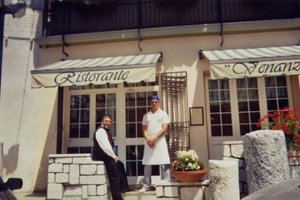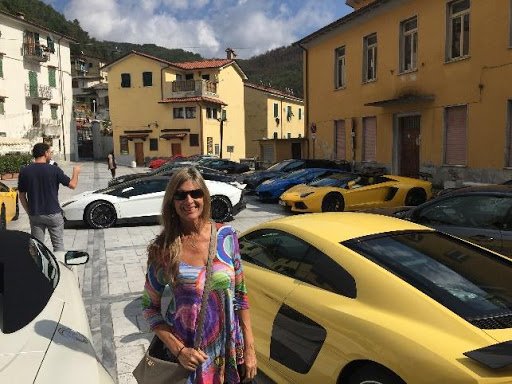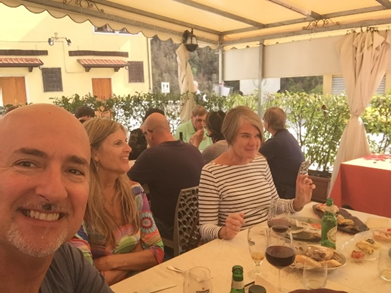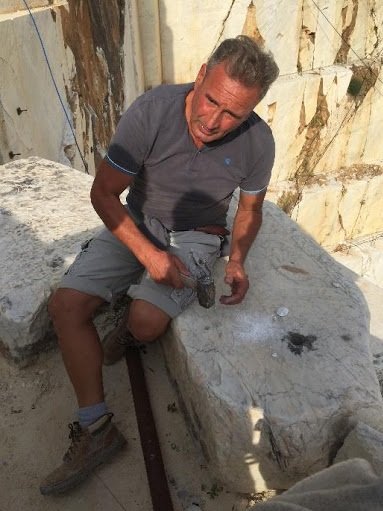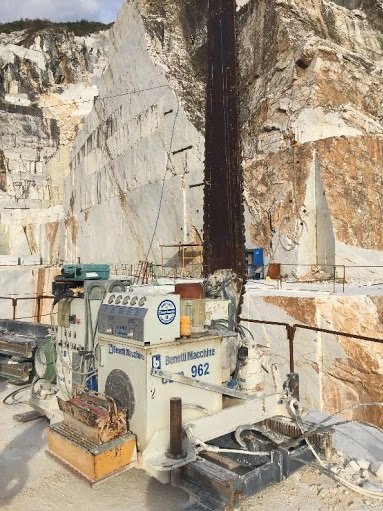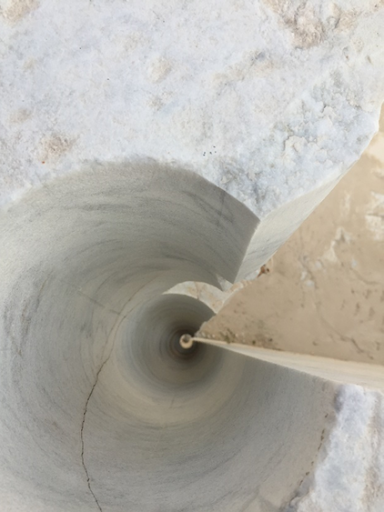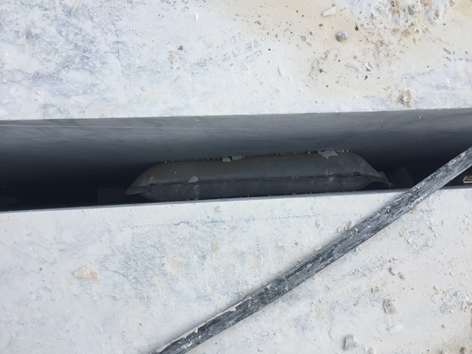Dubai, Toothpaste, Toothpaste, Toothpaste…
Some of my fondest memories in Italy are the times we just get into the car and drive somewhere to explore. One of those times in particular, was a time we took a trip the Lunigiana, a mountainous area in search of the place where the famous Carrara, Statuario and Calacatta marbles are quarried.
The Lunigiana region has had a long history of fighting for control dating back to the Roman times and became under the control of the Florentine state in the early 15th century. At that time, laborers quarried statuary or statuario marble there, just as the Romans had done many centuries before. The name serves as a reminder that some of the world’s greatest statues are carved from marble; think Michelangelo’s David.
The region’s brutality of the past continued into modern times, where the Vinca massacre occurred under German occupation in 1944, just a short distance from Carrara. From August 24 to 27, 1944, the German 16th SS Panzergrenadier Division carried out the Vinca massacre near Fivizzano, Tuscany, in which 162 Italian civilians were killed. During their occupation in Italy, The Division committed a large number of war crimes.
My friend, Candida, planned to take some visiting friends from England on a day trip to Carrara. Since I had rented a minivan, I suggested I’d drive Candida and her guests. My girlfriend, Frannie, and I thought it would be interesting to see a part of Tuscany we hadn’t seen yet. We picked up our friends and started the 1 ½ hour drive from our town to Carrara.
It was nearing lunch time and as we approached Carrara, we came upon a little town called Colonnata. We drove to the center of town with its tiny piazza completely paved in white marble. We settled in at the Ristorante Venanzio, which was founded around 1970 by Venanzio Vannucci, a famous producer and exporter of Lardo di Colonnata, (we’ll talk a little more about lardo later). It was the perfect spot to taste some local nourishment before we trekked on to see the mountain.
That day we witnessed a Porsche club meeting, giving us the opportunity to look at all the exotic cars parked in the square. I could only imagine what it would have been like to drive one of those babies up the mountain.
Our little group took delight in ordering and tasting the various dishes of the establishment. The wine and the Bruschetta with tomatoes and lard was delicious, as we conversed with Candida and her friends. Wanting to get a close look of the mountain where the marble is mined, Candida asked our friendly waiter if he knew anyone who could show us around. After a quick phone call, he said wait outside the restaurant at 4:00 PM for a guide.
This was no ordinary guide. In fact, he wasn’t a guide at all. As we were waiting outside the restaurant for him to arrive, a dusty old pickup pulled up beside us, and a man stepped out to greet us. His name was Luciano, and he was the foreman of a crew working on the mountain. Sure, he wasn’t an official legal tour guide, but what better guide than this guy who has worked all of his life in the quarry.
Now, I’m very certain that this could be considered an unregulated tour. However, it was remarkable. After we reached the foot of the quarry, we piled into his marble dust-covered, dated Nissan pickup to travel the rest of the way up the mountain. As we swerved off the work roads, Frannie sat on my lap. We gasped at the drop-offs we could see looking out the window while being tossed about in the back seat.
We stopped at the top. Luciano explained that the mountain is owned by 20 families, who have been removing the precious white marble for sale around the world for hundreds of years. Today, there’s not much left of the high-quality Carrara, Statuario and Calacatta marble. Whatever good stuff remains is sold off to Dubai, the usual highest bidder. For every 5-ton marble block that is of the highest quality cut from the mountain, there are four other blocks of poor quality that is sold off to be used in the production of toothpaste.
As we stopped to listen to Luciano, he stated in his thick Lunigian mountain accent, “Dubai, toothpaste, toothpaste, toothpaste, toothpaste!” He went on to say the mine is almost finished now and the men work hard to find what precious pieces of marble that is left.
He then sat down with a hammer and chisel and some tools to show us how they had cut the stone in ancient times. Today, they use a diamond laden saw band, which has to be changed often as it cuts 5-meter lengths. The men drill deep holes at the top and saw lengths. They place these soft metal bladders like wedges inside the cut marble that can be expanded with hydraulic water that forces apart the two sides and splits the large chunk of marble like firewood.
This type of work has always been historically dangerous and today accidents happen often, including loss of life. In fact, by the end of the 19th century, Carrara had become a cradle of anarchism in Italy, in particular among the quarry workers. According to a New York Times article of 1894, workers in the marble quarries were among the most neglected laborers in Italy. Many of them were ex-convicts or fugitives from justice. The work at the quarries was so tough and arduous that almost any aspirant worker with sufficient muscle and endurance was employed, regardless of their background. (1) Carrara is the birthplace of the International Federation of Anarchists (IFA), formed in 1968.
The mountain and the town had a strange feel to it. The town and area seemed to be closed off from the rest of Italy, as if the people there didn’t want outsiders (anarchist and tourist alike) coming in to see what was going on. Maybe that’s the result of a 100 plus years of anarchists coming there to set a foothold. The mountain, in all its beauty had a tired feel to it, as if to say “I’ve given you the best of me.” Today, it couldn’t seem possible to have such a radical change to an environment as the one that has happened to this mountain. They mine this marble from the top, the sides and even in the middle. Different families, as Luciano put it, own different parts of the mountain. Some own the top, some own the sides, and some even own what’s in the middle. It’s not uncommon to see cave-like cuts into the mountain, where the workers cut the stone and harvest what is inside the mountain, while tons of marble lay above. I felt nervous just standing inside one of these caves, thinking how it is possible the mountain doesn’t collapse on it.
Our guide was quite a character and entertaining as he conducted this most informal but interesting tour. He even had a little marble gift shop out of the back-truck bed which he opened for us to browse through after our tour.
This area is known for its lardo, a type of cured pig fat that is served on bread. It was just the energy source needed for the workers to eat while on lunch break many years ago, especially during the cold months. After our tour he offered to take us to his home to try his homemade wine and purchase some of the lardo he cured. We stopped at his home, tasted the wine and I purchased some of the lardo. It is severed with a thin slice of the pork fat on warm toast, which melts the fat into the bread. It’s salty and very good.
As we left Luciano’s home, I noticed the inside of the minivan was covered with marble dust, brought in by our shoes as a departing gift. Now, when I see the famous David statue and other great marble works, I’ll always think of our time overlooking the mountain just as Michelangelo did when he visited there to personally pick out his raw stone for his works.
(1) A Stronghold of Anarchists, The New York Times, 19 January 1894
Blog Posts


